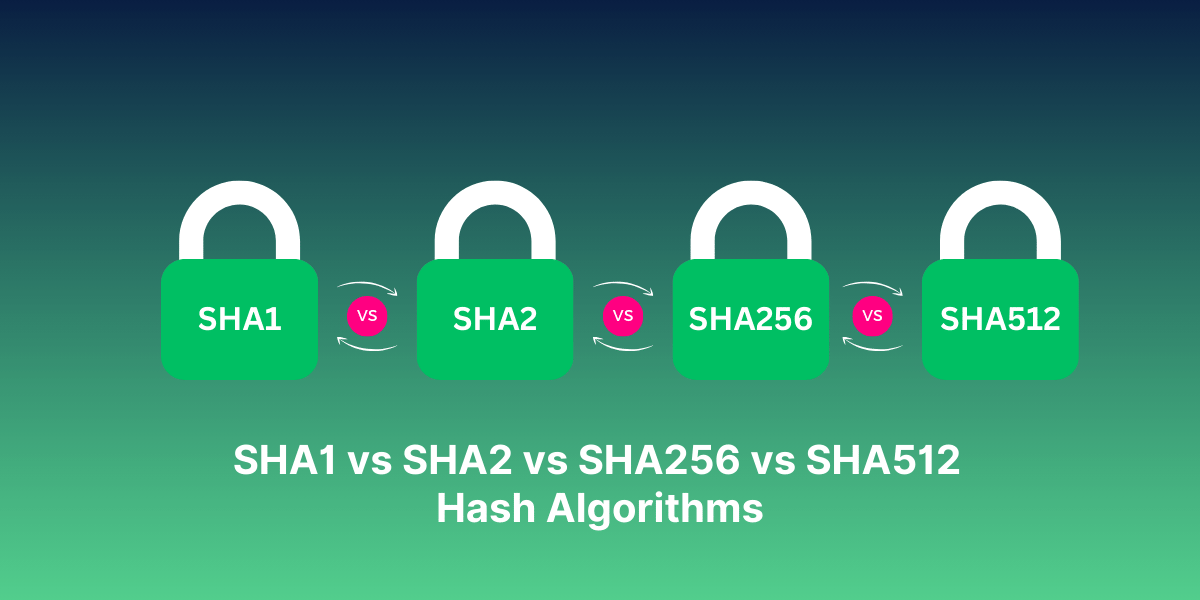In the intricate realm of cybersecurity, hash functions serve as the stalwart sentinels guarding our digital domains. Among the most well-known of these sentinels is SHA-1 (Secure Hash Algorithm 1), a cryptographic cornerstone that has both marked its territory in the annals of digital security and, alas, faced significant scrutiny over its longevity and efficacy. Understanding SHA-1 reveals a complex tapestry woven from strands of cryptography, history, and the ceaseless march of technological advancement.
Understanding SHA-1
SHA-1 is a member of the SHA family, designed by the National Security Agency (NSA) in the mid-1990s. At its core, SHA-1 produces a 160-bit hash value, often rendered as a 40-character hexadecimal number. The utility of this hash function is akin to a digital fingerprint; it allows for the identification of data integrity without revealing its contents. When a file undergoes hashing, an algorithm transforms it into a yet non-invertible fixed-length string, encapsulating its presence like a seal on a wax letter.
The primary use of SHA-1 has been for data verification and digital signatures, acting as a gatekeeper in environments where data integrity is paramount. Yet, in a world increasingly defined by data breaches and sophisticated cyberattacks, questions surrounding its security have burgeoned. Is this once-ubiquitous sentinel still worthy of its post?
The Rise and Fall of SHA-1
SHA-1’s ascendancy during the early 2000s can be likened to a mighty oak tree, standing tall in the forest of cryptographic algorithms. However, as the field of cryptography evolved, so too did the arsenal of tools used by adversaries seeking to exploit weaknesses. The first significant crack in SHA-1’s armor emerged in 2005, as researchers publicly demonstrated vulnerabilities that could lead to collision attacks. In essence, a collision occurs when two distinct inputs produce the same hash output, undermining the very tenets of a hash’s uniqueness and reliability.
Fast forward to 2017, and the situation grew dire. Google and CWI Amsterdam unveiled the SHAttered attack, successfully generating two different files that shared the same SHA-1 hash. This revelation acted as a clarion call for the broader tech community: SHA-1 was no longer a guardian one could trust. The ramifications were profound, leading institutions to rethink their reliance on this once-revered algorithm.
Current Perspectives on SHA-1 Security
In the wake of exposure, major technology players, including Google and Microsoft, have deprecated SHA-1 in favor of more robust alternatives like SHA-256 and SHA-3. These newer algorithms, designed to withstand the rigors of modern cryptanalysis, have outpaced SHA-1’s capabilities. Continuing the oak metaphor, SHA-1 has withered while its more resilient counterparts flourish, drawing nourishment from advanced mathematical constructs and design principles.
The migration away from SHA-1 has not been instantaneous. Many systems and legacy applications still employ SHA-1, creating a paradox where outdated tools linger in an ecosystem that demands modern security standards. Key challenges arise as organizations confront the duality of maintaining legacy systems while safeguarding against contemporary threats.
The Inevitable Transition
Transitioning from SHA-1 to a more secure hashing standard is akin to navigating a labyrinth. Organizations must balance operational continuity with risk management. Comprehensive migration strategies often include updating not just the hashing algorithm but also the infrastructure and protocols surrounding it. Best practices recommend employing SHA-256 or SHA-3, which bolster data security while ensuring compatibility with modern security standards.
For applications reliant on SHA-1, risks are palpable. Digital signatures, certificates, and any cryptographic mechanisms leveraging SHA-1 are susceptible to forgery, causing potential reputational damage and fiscal liability. In such scenarios, transitioning to a fortified algorithm is not merely prudent; it is imperative.
Conclusion: The Erosion of SHA-1
In sum, SHA-1 represents an evolutionary marker in the cryptographic landscape. Its initial robustness has been eroded, leaving it vulnerable to contemporary threats. While it once stood as a formidable guardian of integrity, the wisdom of the technological community now suggests that it is time to relinquish this antiquated sentinel in favor of more robust defenders.
As organizations recalibrate their security postures, the transition away from SHA-1 is both an acknowledgment of its historical significance and a commitment to future security. The digital world is an ever-shifting terrain; to remain steadfast amidst the storms of innovation, adopting resilient security measures is not simply advisable—it is essential.
By recognizing the limitations of SHA-1 and taking proactive steps towards modernization, entities can forge a more secure reality, where trust in digital integrity is preserved through the legacy of relentless improvement and adaptation. The decision to upgrade is no longer a question of if but rather when, as we venture forth into an era characterized by heightened threat landscapes and unparalleled digital reliance.








Leave a Comment